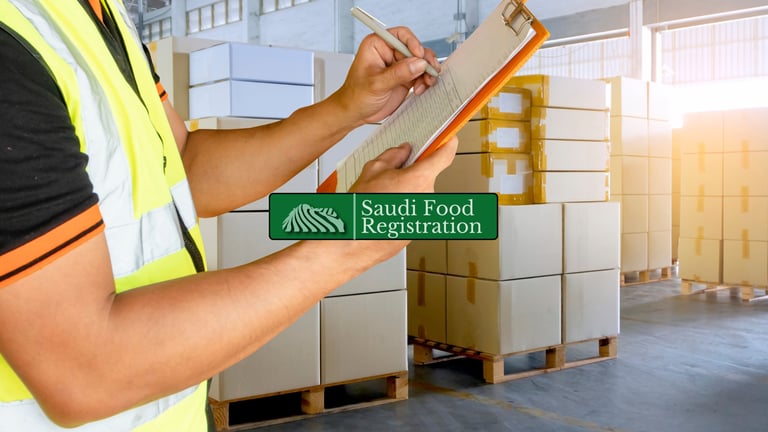Do You Need SASO Certification? | Saudi Food Registration
Learn when SASO certification is required for food products in KSA. Ensure your packaging and labeling meet import standards | Saudi Food Registration.
5/30/20252 min read


Does Your Food Product Need SASO Certification for SFDA Approval in KSA?
For companies registering food products in Saudi Arabia, understanding whether SASO certification is required is a common point of confusion.
While SFDA governs food product safety and registration, SASO (Saudi Standards, Metrology and Quality Organization) plays a complementary role — especially when it comes to packaging, labeling, and product imports.
This guide explains when SASO certification is needed, how it relates to SFDA approval, and what steps food businesses should take in 2025 to stay compliant.
What Is SASO Certification?
SASO sets and enforces national standards in Saudi Arabia, covering everything from electrical goods to packaging materials. For food-related businesses, SASO compliance typically focuses on:
Packaging materials and food contact safety
Barcode and traceability systems
Label durability and print standards
Importation and customs clearance requirements
SASO certification confirms that your packaging and labeling meet Saudi technical regulations — even before SFDA reviews the product itself.
When Do Food Products Require SASO Certification?
You may need SASO certification if:
Your product is imported into Saudi Arabia
Your packaging involves plastic, metal, or composite food-contact materials
You use barcode systems or QR codes regulated by SASO
Your outer packaging or shipping carton is subject to SASO durability standards
Products without SASO-compliant packaging may be blocked at customs even if SFDA registration is complete.
SFDA vs. SASO: What’s the Difference?
SFDA focuses on regulating food, supplements, and cosmetics. It ensures product safety, proper classification, and registration in Saudi Arabia.
SASO, on the other hand, governs packaging materials, labeling durability, barcode traceability, and import compliance.
It certifies that packaging and logistics components meet Saudi technical standards and customs requirements.
Key Documents for SASO Certification
Certificate of Conformity (CoC)
Test reports for packaging materials
Labeling verification documents
Barcode registration (if applicable)
Shipping carton specs (if required)
These documents may be requested during customs clearance, especially for high-volume imports.
How to Stay Compliant in 2025
1. Verify If SASO Applies to Your Packaging
Consult with your manufacturer or supplier about the materials used. Plastic or multi-layered food packaging often requires verification.
2. Work with a SASO-Approved Notified Body
SASO does not issue certificates directly. You must go through a certified third-party body recognized by SASO.
3. Align Your SASO and SFDA Timelines
Don’t wait until SFDA approval to begin SASO certification. Overlapping the two saves time at the port of entry.
4. Keep Records Ready for Import
Customs may ask for CoCs and packaging test reports before clearing your shipment. Ensure your documentation is complete and up to date.
Related Topics You Might Find Helpful
Learn what packaging certifications affect SFDA approval
See how facility registration affects import clearance
Learn how label testing and validation prevent delays
Learn how SFDA handles shelf life and expiry labeling for food products in Saudi Arabia.
Certification Gaps Can Delay Market Access
Even if your product passes SFDA checks, lack of SASO certification on packaging or shipping can block your entry. Make sure both certifications align.
Need help verifying SASO requirements for your food packaging?
Speak with our regulatory experts or use our chatbot in the bottom right corner now.
